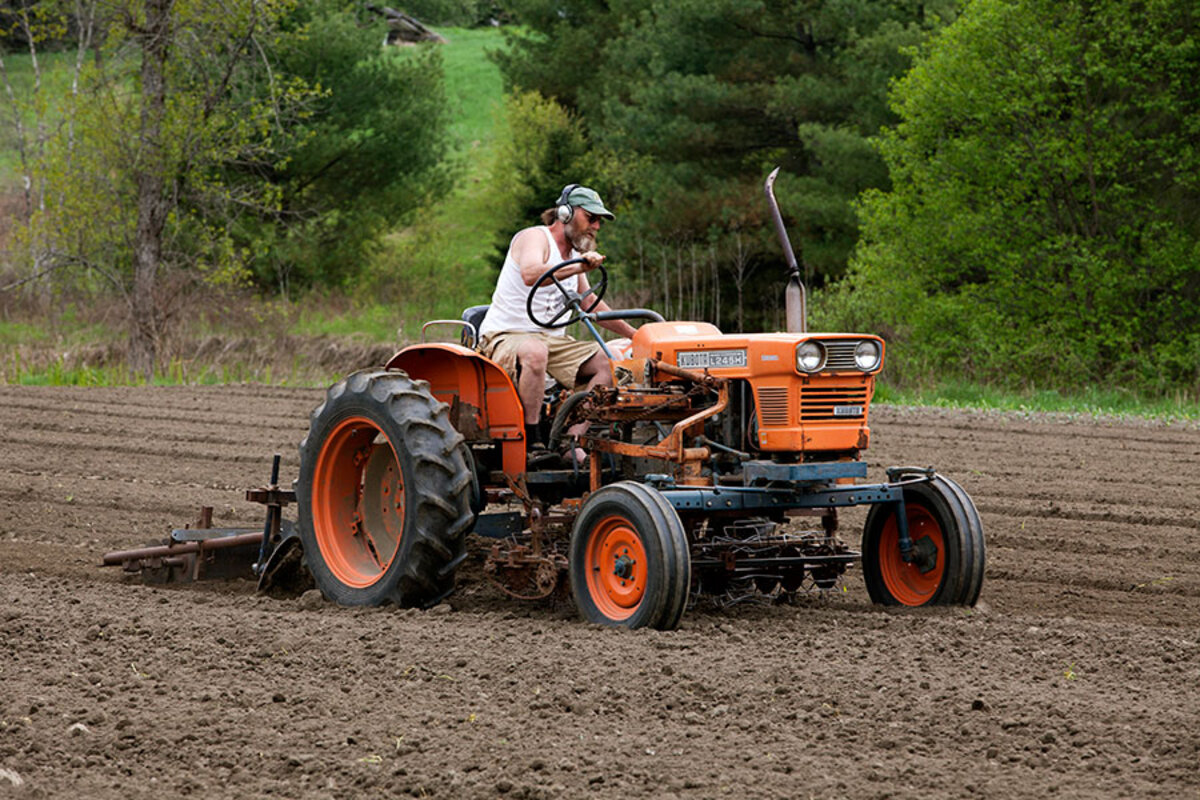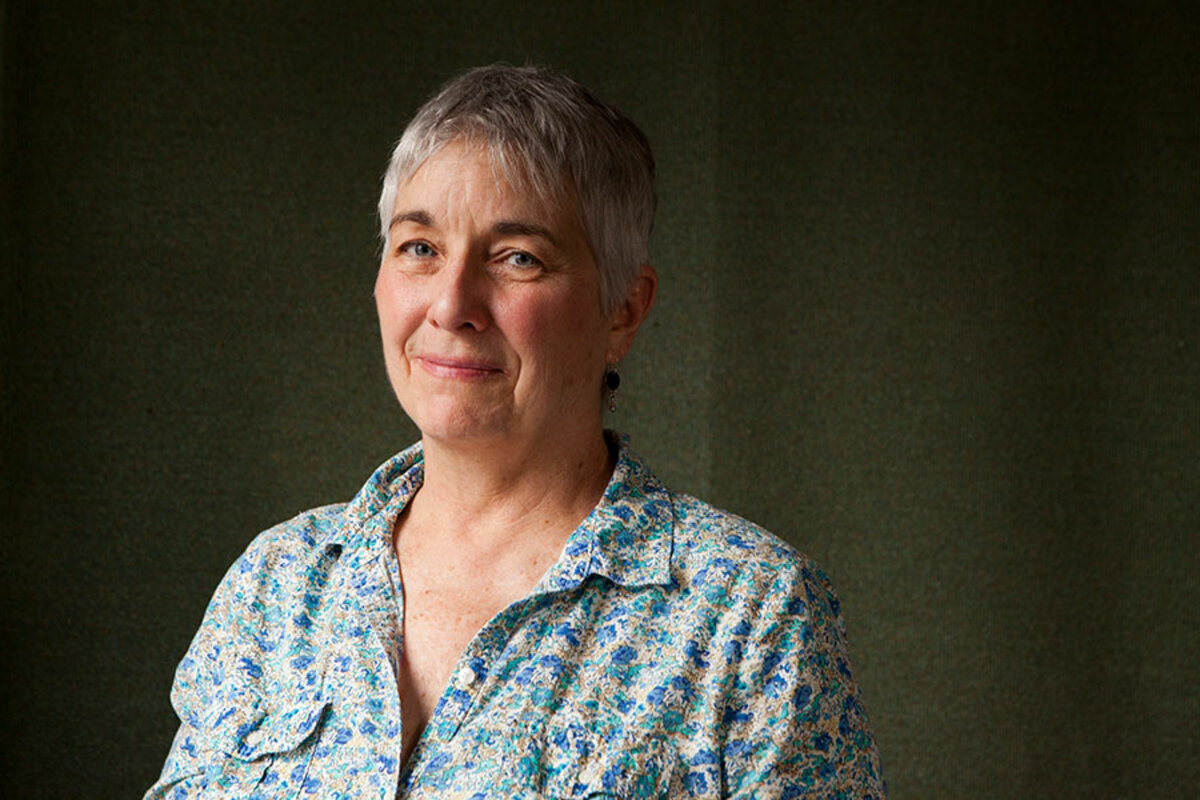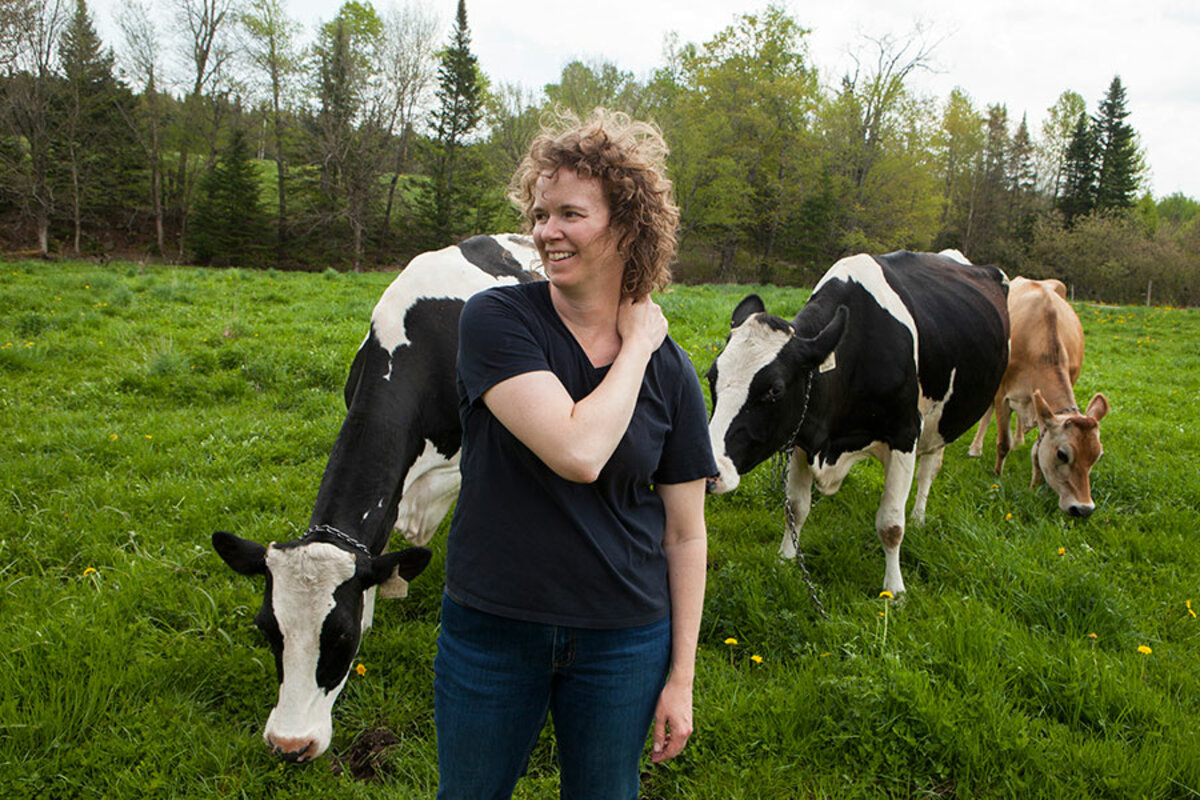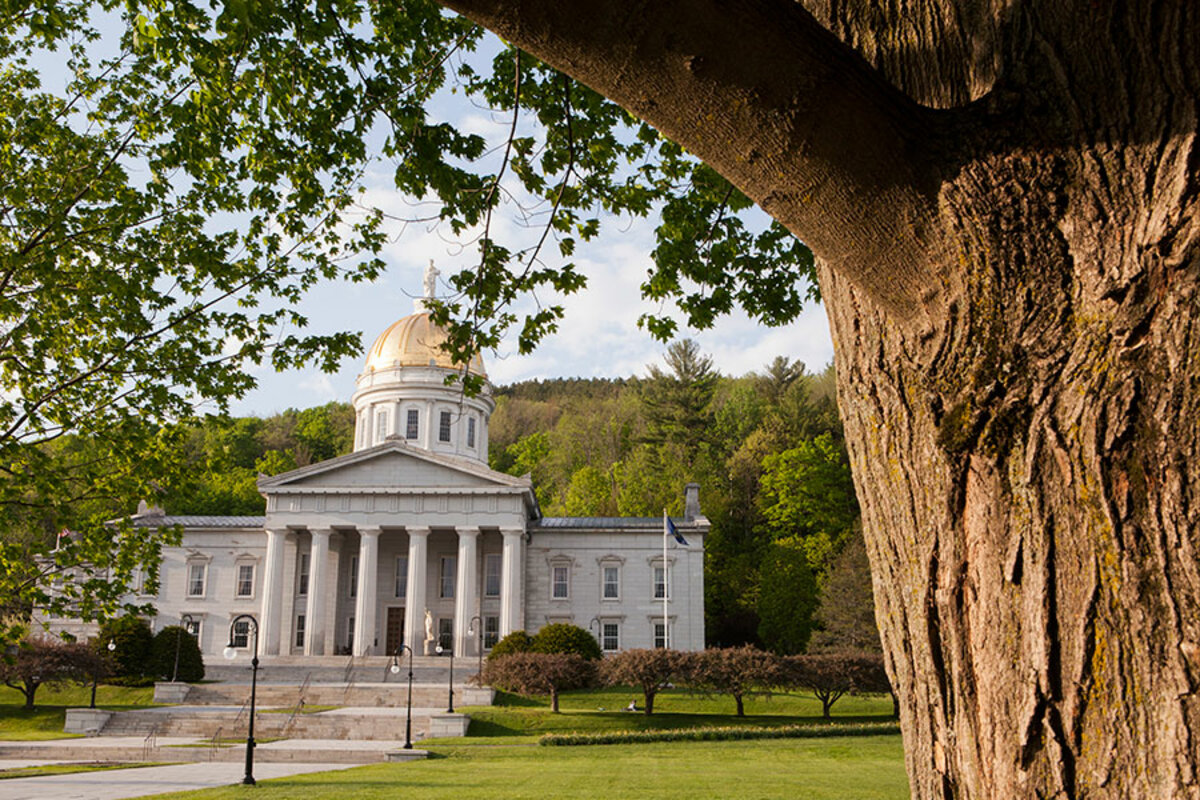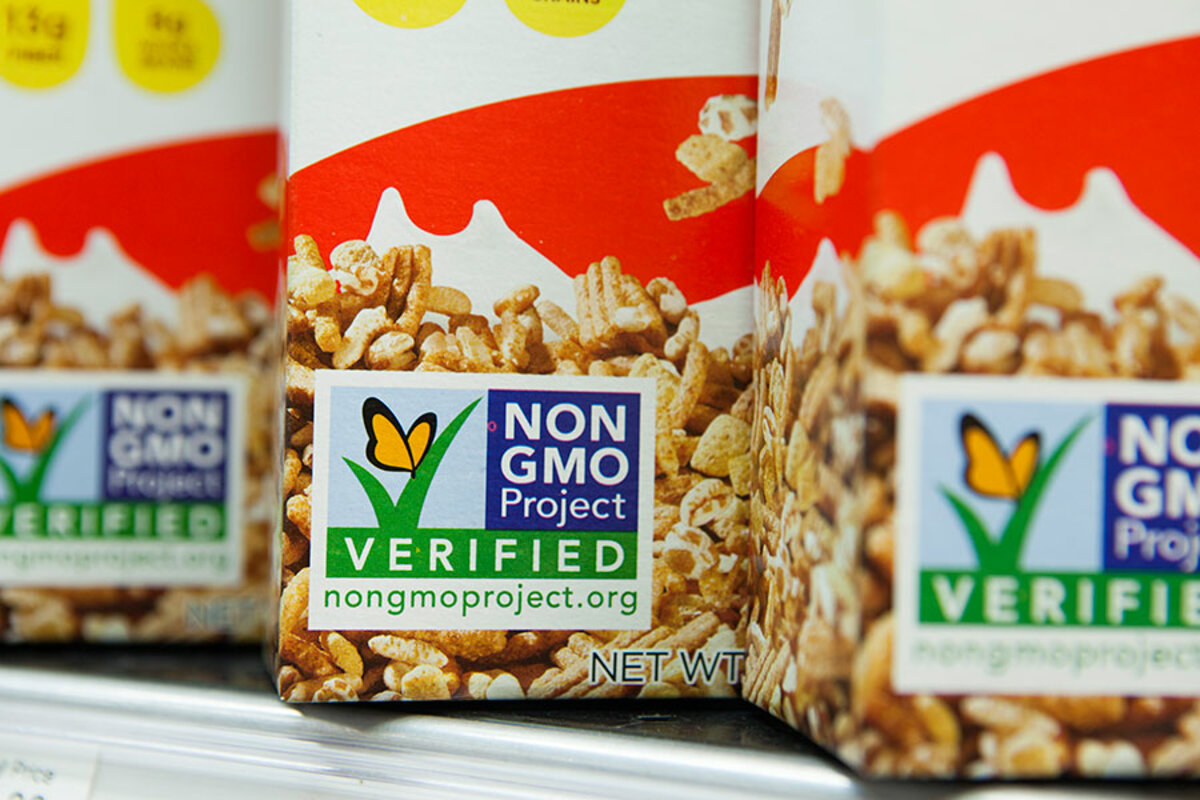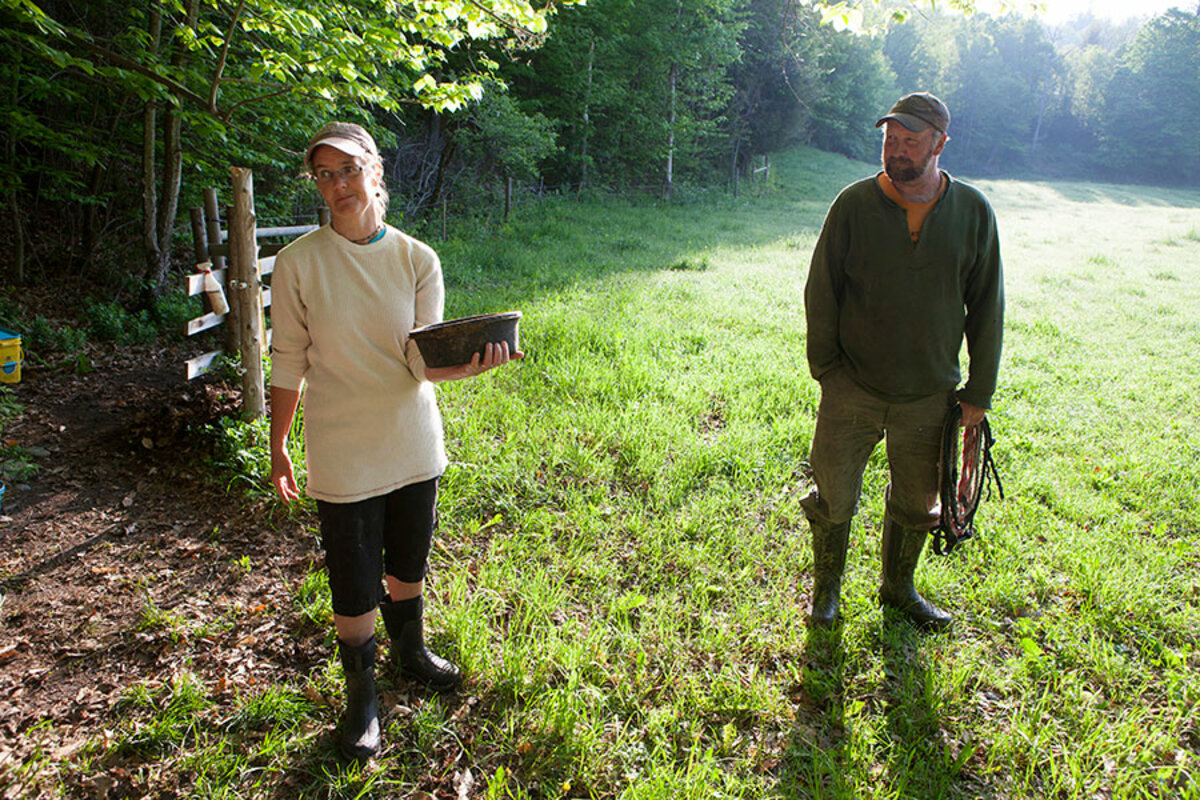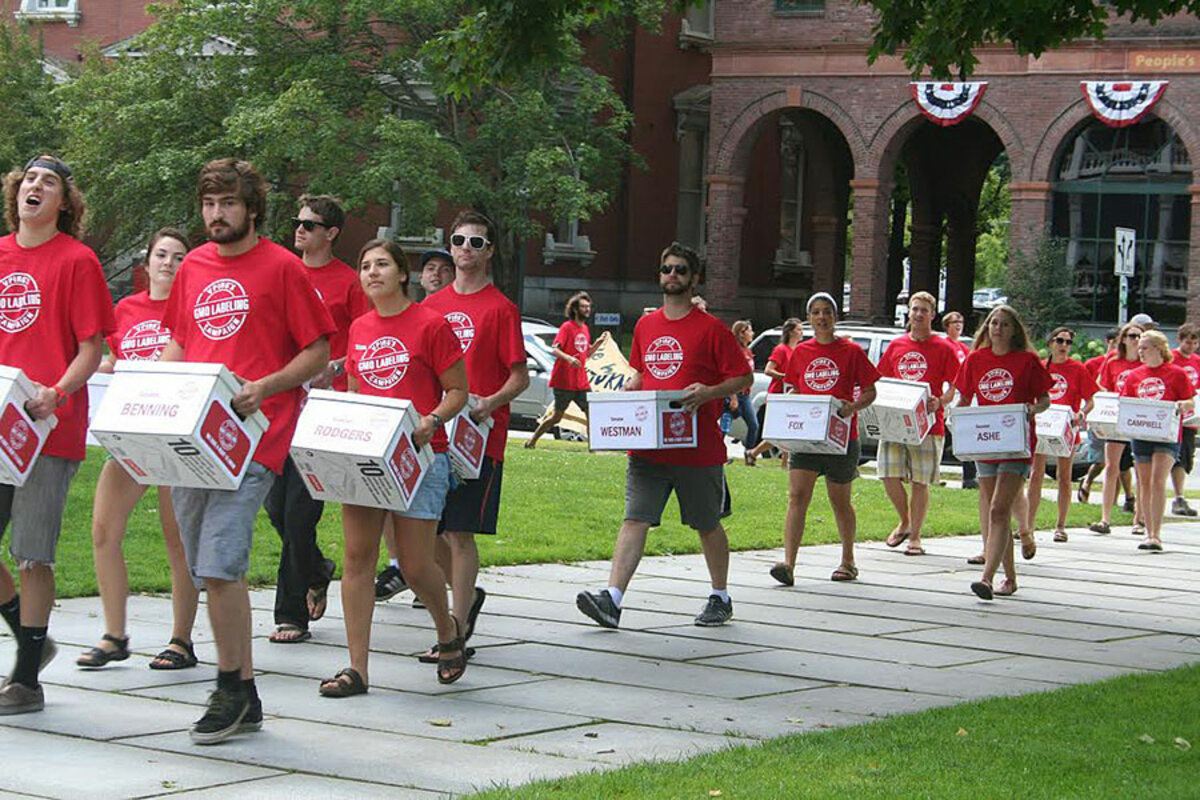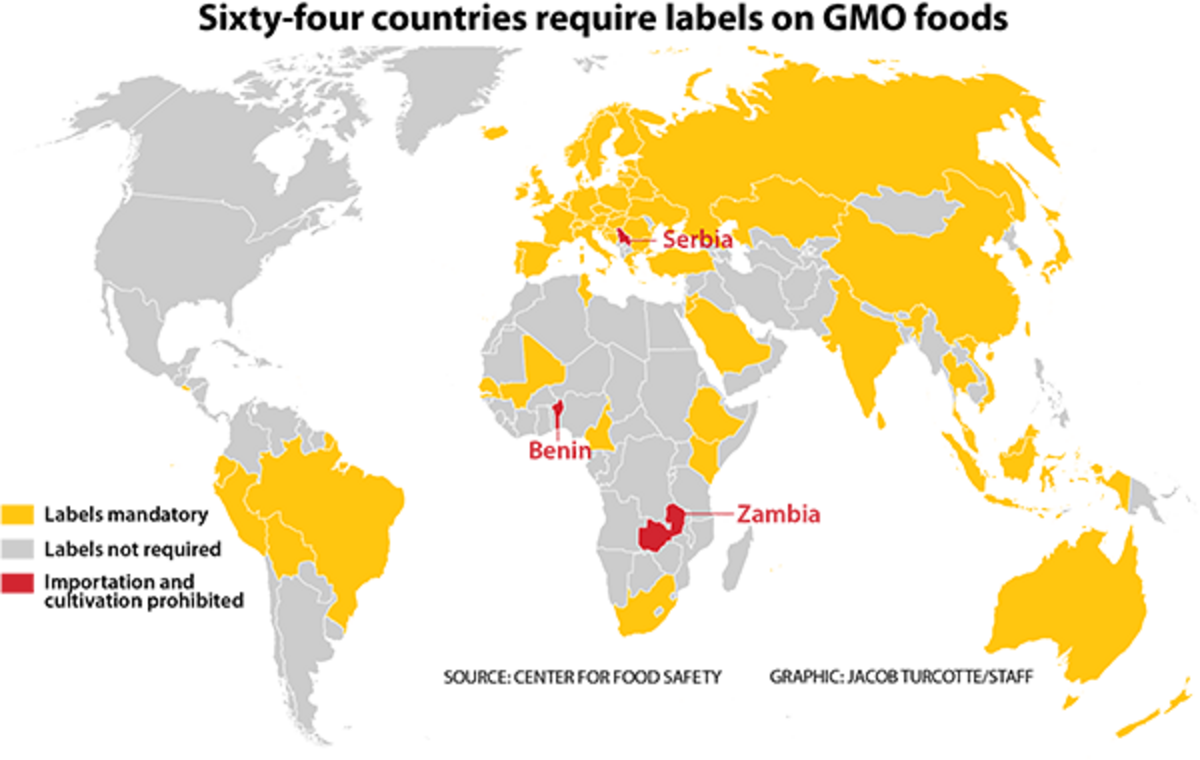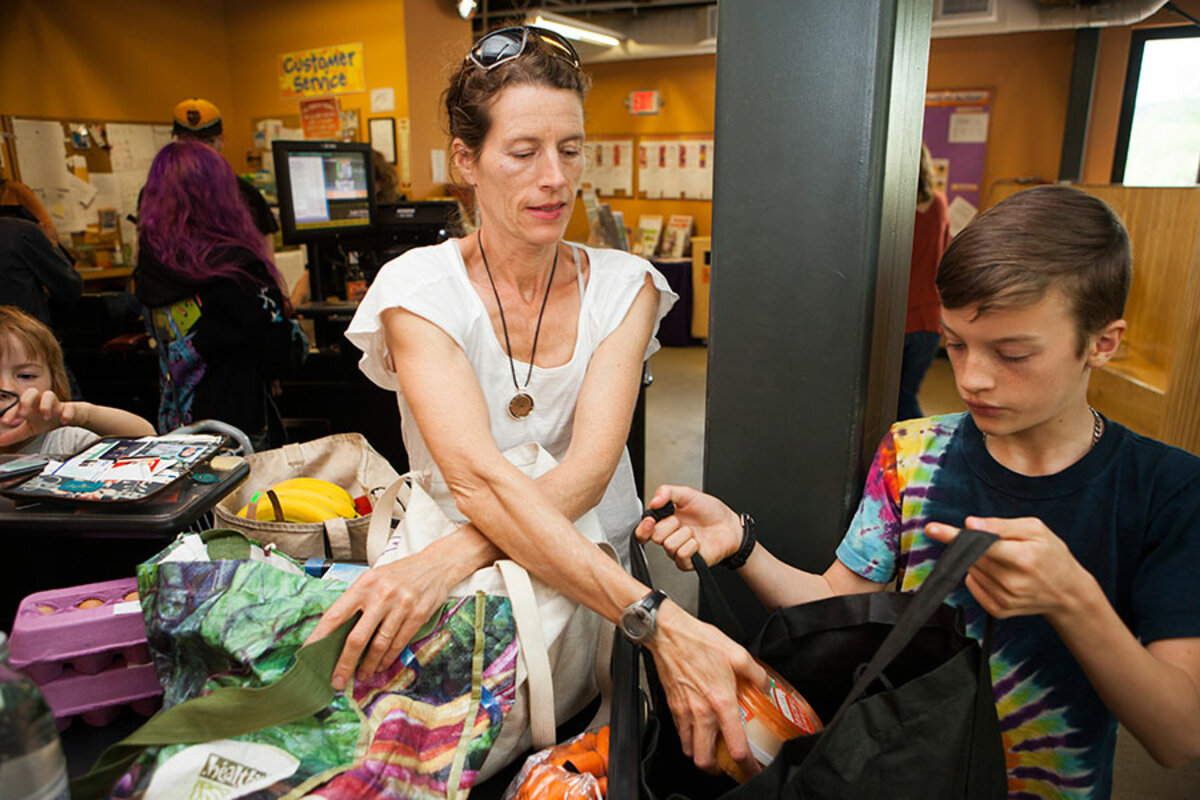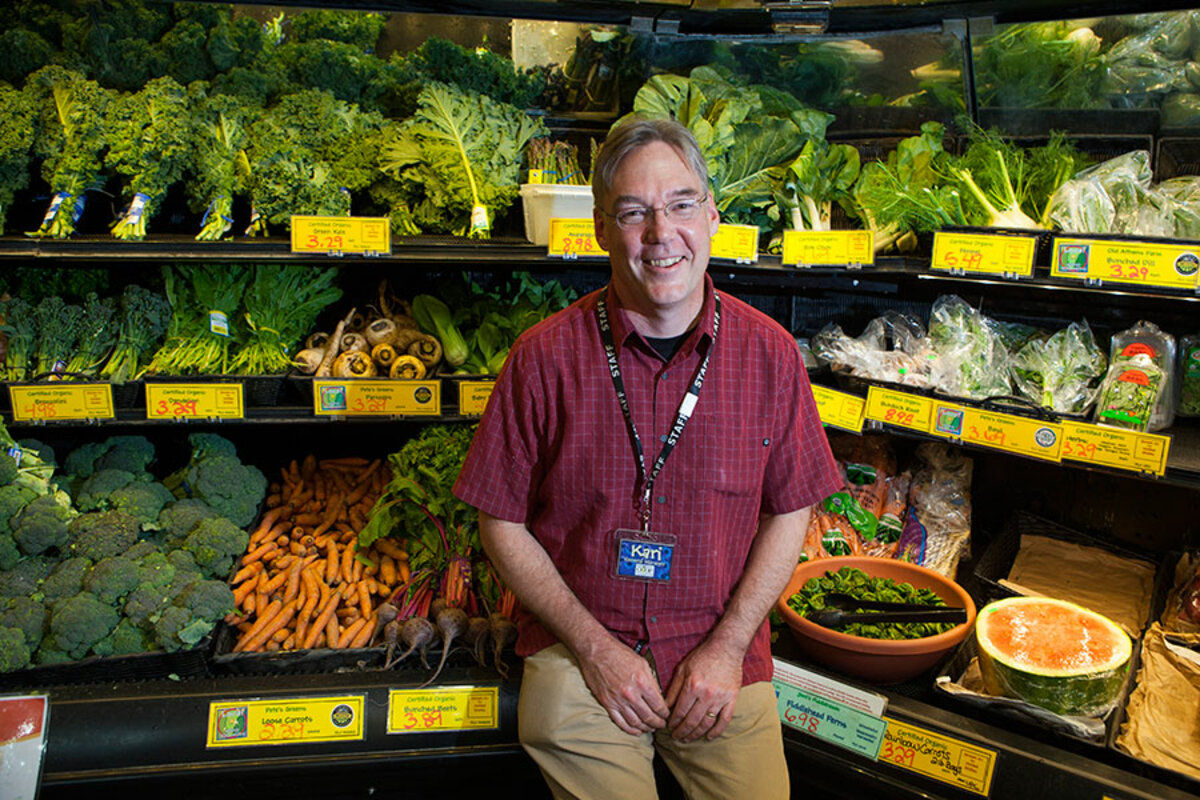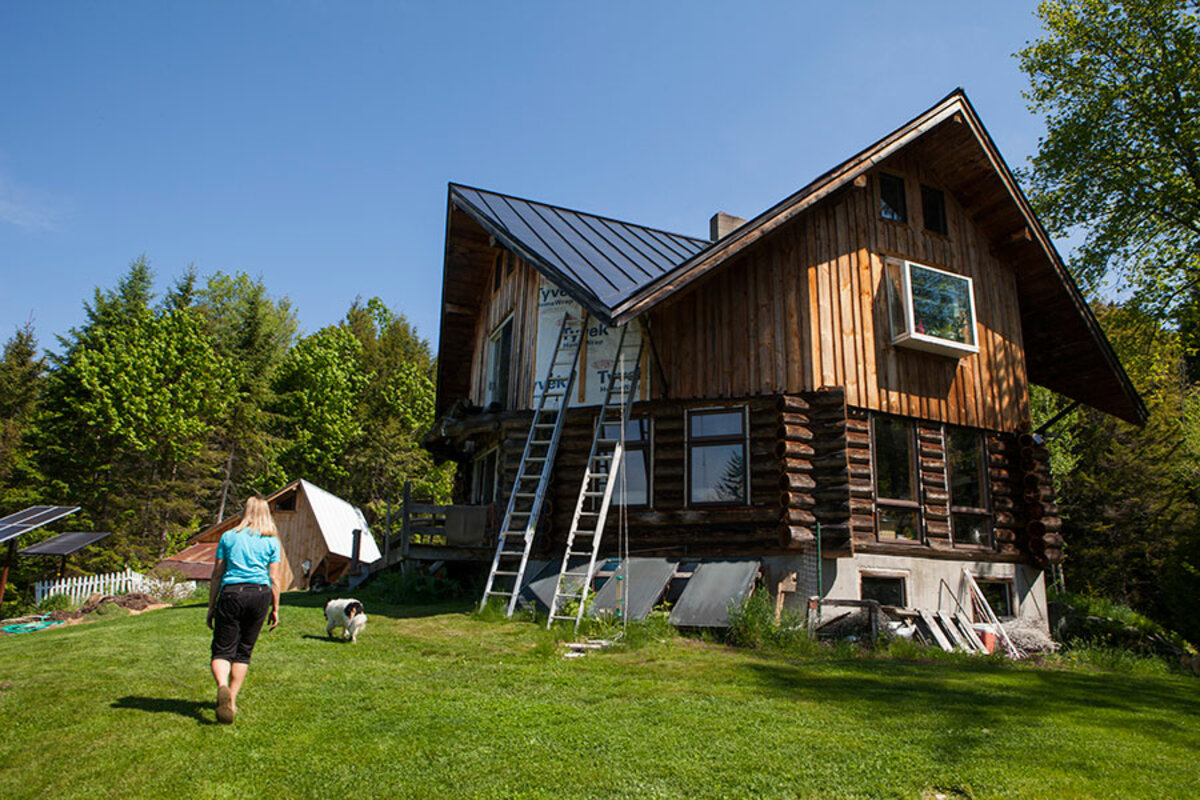GMO labels: The great American food fight
Loading...
| Montpelier, Vt.
Not far from the golden dome of the State House here, in the offices of a grass-roots farm advocacy group called Rural Vermont, executive director Andrea Stander is planning a party. ��
For more than five years now, Ms. Stander has been working with other state advocates and legislators on a law that would require a label on most foods sold in Vermont that contain genetically modified organisms, or GMOs. It has been a tough fight, with both supporters and critics saying the law could upend the American food system. Since passing the Vermont State House in 2014, the GMO labeling law has come up against legal challenges and powerful lobbyists, both in the state and in Washington, D.C., and has raised the ire of big players in the agriculture and biotechnology industries. But unless opponents in the US Congress manage to derail it – something they are still avidly trying to do – Vermont’s labeling law will go into effect July 1.��
And that, Stander says, deserves a celebration.��
The musicians are already booked. Speeches will redound from advocates and legislators. Down the road at the Hunger Mountain Coop, which specializes in local organic food, manager Kari Bradley is planning an ice-cream social.
“The right to know if GMOs are in your food – it’s been amazing how this effort has brought people together,” Stander says. “It has been small-scale rural farmers who have been skeptical about GMO crops for years. But this has also been families and moms and health professionals. Food is really fundamental.”
But not everyone is happy. An hour and a half north, in Vermont’s sparsely populated Northeast Kingdom, dairy farmer Joanna Lidback worries what the labels will mean for the viability of small farms like hers. ��
“I have friends who grow organic corn, who grow genetically engineered corn, and we can all talk about why we do it...,” she says. “I want to see a respect for the different types of decisions farmers make.”
Many of her neighbors have expressed similar unease at the labeling effort. As a growing list of big food companies, such as Campbell’s and General Mills, announce plans to label their genetically engineered products because of Vermont’s law, or even re-source their ingredients to avoid GMOs, leading figures in the food and grocery industry have lobbied US congressional members to come up with a new law that would make Vermont’s defunct.
Meanwhile, passions have flared. After Ms. Lidback testified against the labeling law, she was skewered on social media and received prank calls at her home. Those who have spoken out in favor of the law have been accused of threatening the country’s – even the world’s – food supply. Consumer groups have said corporations are trying to sneak evil products into the American diet, while some scientists involved in GMO research have basically called those consumers who support labeling ignorant.��
How little Vermont, with a population smaller than Memphis, Tenn., has brought change to Big Food nationwide is only part of the story here. Go to the Green Mountain State, with its abundance of farms and more farmers markets per capita than anywhere else in the country (as well as more artisanal cheesemakers), and one gets a glimpse into a much bigger debate. Whether to label GMOs in food touches on the deepest divides in American culture. It raises questions about corporations and control of the nation’s food system, the way people consume resources, scientific knowledge versus indigenous knowledge, and, ultimately, the way Americans live.
Regardless of whether the law gets superseded in Congress or blocked in the courts, Vermont has framed a debate that is likely to reverberate for years and may well still shape what ends up on America’s dinner plates.��
“We are debating so much more than the use of the [GMO] technology itself,” says Kacy McKinney, a visiting scholar at Middlebury College in Middlebury, Vt., who has studied the geography of the GMO labeling efforts. “This is about who we are right now, whose values count, and whose knowledge counts.”
• �� �� • �� �� •
GMOs are often given the not-quite-helpful descriptor of “organisms with genetic material that has been altered by genetic engineering.” The vagueness of that definition (what constitutes “genetic engineering” can be hotly debated) reflects the huge variety of biotechnological practices and outcomes related to GMOs, even before the arguments about ethics, practice, and categorization. ��
Scientists creating GMOs use different methods to both isolate traits they want from one organism and insert those traits into other genomes, and do so with widely varying goals in mind. Insulin, many vaccines, and other medicines are made with GMOs. So are pest-resistant corn crops, Roundup Ready soybeans that can resist the spraying of the controversial herbicide, and cold-resistant tomatoes – as well as vitamin A-enriched rice, created in the name of bringing nutrients to the world’s poor.��
How scientists make these new organisms, and what happens when they do, differ from product to product.��
“The science of GMOs is extremely difficult to understand,” says Marion Nestle, a sociologist and professor in the department of nutrition, food studies, and public health at New York University, as well as the author of the 2002 book “Food Politics: How the Food Industry Influences Nutrition and Health.” “I have a PhD in molecular biology and I can’t understand it.”
In 1994, the US Food and Drug Administration approved the first genetically engineered food for humans – the FLAVR SAVR tomato, made to have a longer shelf life than conventional tomatoes – for sale in US grocery stores. Since then, the production of genetically modified crops has skyrocketed. By 2015, some 94 percent of domestic soybean crop acreage was genetically modified, along with 92 percent of US corn and 94 percent of US cotton, according to the US Department of Agriculture. Almost all US canola oil and sugar beets are genetically engineered.
Many critics of GMOs say these genetically engineered foods are neither regulated nor safe, and can harm human health in ways that scientists don’t yet fully understand. But proponents say that various federal agencies have control over what products come into the food chain, and point out that dozens of studies have found no effect of genetically engineered food on humans.��
Critics say that while GMO proponents claim to be searching for ways to “feed the world,” most GMO technology is used to increase monoculture farming – producing vast acreages of one crop, usually corn or soy – in ways that harm the soil and threaten human well-being. There are similar debates about whether GMOs increase pesticide use, whether they threaten the global food supply, and whether they help farmers. Few facts exist that both sides agree upon.
All of this, say Ms. Nestle and others who have studied the GMO debate, has made for an emotional, divided conversation.
“It’s totally polarized,” she says, because those on either side of the GMO debate are simply not talking about the same thing. “The anti-GMO public is talking about who controls the food supply ... [and] the industry is talking about safety.”
Ms. McKinney agrees.�� ��
“How we frame the problem really impacts the solution,” McKinney says. “If the problem is [seen as] overpopulation or insufficient land to grow food for all people, then the solution is a technoscientific one like GMOs. Let’s grow more food. But if you see that same problem as a question of wastage, or access, then the answer is different.”
Although she says that American culture has long embraced more and better technology as the answer to social problems, an increasing number of people are looking for a different approach. These are people like Lisa McCrory and Carl Russell, the proprietors of Earthwise Farm & Forest. Ms. McCrory and Mr. Russell’s farm sits in the picturesque White River Valley – a quintessential swath of green-hilled, red-barn Vermont.
There the couple keep a menagerie of animals that includes three cows, which they milk by hand every morning; a collection of egg-laying hens and meat birds, which live in runs moved every day to maintain prime grass and soil ecology; and draft horses, which Russell uses rather than machinery for his forestry business. They grow crops as well, and live with their three children (when the oldest is home from college) in an octagonal house they built themselves from logs that Russell forested on the land that was once his grandfather’s.
“We’re a homestead farm,” explains McCrory, as she moves the perimeter fences of her cows’ pasture, a way of ensuring that grasses are grazed and nourished methodically. “We set a different example of how you can raise food from the land.”��
For her and Russell, there is no question that GMOs are a problem. They believe the technology encourages destructive land practices, spurring pesticide use and the sort of one-crop agriculture that can damage the soil. They also see it as a manipulation of nature in ways that only make sense in the context of an agricultural system skewed toward big, unsustainable yields, and commodity food.��
“Economies of scale don’t support biological systems,” Russell says as he finishes the milking.��
So instead of trying to scale up, and use the big machinery and technology that start them down the path to GMOs and taking shortcuts with the land, Russell says they have embraced the “slow economy.” They try to produce less with far more care, feed themselves, and then sell what’s left. ��
It’s not a new concept, he says, or a radical one: People have been doing it for centuries. He gestures to the pastures around him, the sun starting to warm the sweet grasses.��
“We have this incredible intricate system that gives us everything,” he says. “It’s connected in ways that we don’t even fully understand. You are going to sit in a building, in a lab, and make new genetics?”
• �� �� • �� �� •
Vermont legislators have been debating GMOs for years. In the early 2000s, David Zuckerman, a Vermont state legislator and organic farmer, introduced a package of bills that would do everything from record the number of GMO seeds in his state to ban the growing of GMO crops outright. Only one of those bills eventually became law, requiring seed companies to report how much of their products they were selling in Vermont. In 2006, Mr. Zuckerman introduced another bill that would have held genetic engineering companies liable for any economic and environmental harm caused by their product. Organic farmers, for instance, were increasingly worried about pollen drift from GMO plants, which could contaminate their own plants.
That law passed, but was vetoed by the governor, and proved incredibly divisive within the agricultural community. Many farmers were worried that the seed companies they relied upon would refuse to sell their products in Vermont. Consumers, though, were more agnostic.��
“There just wasn’t as much energy [as there was for passing the labeling bill],” Zuckerman recalls.
But by the early 2010s, something had changed. A decade of popular books and documentaries about food had started to shift the American sense of what people should eat and why. The once niche organic movement was mainstream. Public skepticism grew about what many saw as corporate control over food. Local food was in.��
“There is a trend in our country right now that I don’t think is going anywhere, where people want more information about food in general,” says Maddie Monty, policy adviser for the Northeast Organic Farming Association of Vermont.
Across the country, consumer-rights groups and organic-food advocates saw a chance to make inroads on the GMO debate. Instead of emphasizing the safety of GMOs, or even the environmental effect, they took a new approach: labeling. After all, they said, people had a right to know what was in their food, didn’t they? Dozens of other countries around the world required labels when GMO products were involved. Why not the United States?
Campaigns for referendums on GMO labeling began in California, Oregon, and other states. In September 2011, the Center for Food Safety, a nonprofit advocacy group, submitted a petition to the US Food and Drug Administration calling for the mandatory labeling of GMO foods and quickly got more than 1 million signatures. A national organization, Just Label It, formed that same year to help GMO labeling efforts across the country. And in Vermont, a number of organizations joined together to form the Vermont Right to Know GMOs coalition. ��
“We thought the political climate was right,” says Falko Schilling, a consumer protection advocate at the Vermont Public Interest Research Group, one of the coalition members.��
Multiple surveys showed that Americans were overwhelmingly supportive of labeling – some 90 percent agreed that GMO products should be marked as such.��
“You can’t find 90 percent of Americans who support puppies,” says Chris Miller, the social mission activism manager for Ben & Jerry’s, the iconic and iconoclastic Vermont ice-cream company, which has been a proponent of GMO labeling.
Sure enough, Mr. Schilling says, the support for what they were doing was overwhelming. In 2013, his group canvassed the state and eventually delivered 30,000 signatures in support of the law to the State House.��
“We were surprised at the level of interest and support,” he says.��
But in other states, the labeling efforts did not go well. Food industry and biotechnology groups argued that the labeling was misleading and dangerous. They said it would cause food prices to increase, in part because it would require more labor to create segregated systems for GMO and non-GMO food. Meanwhile, they claimed, consumers would be scared away from food that was safe. Perhaps most important, the argument went, labeling would push growers and manufacturers away from the sort of technology necessary to feed the world.��
The Grocery Manufacturers Association, which represents big food companies such as Kellogg’s and General Mills, joined with a number of big biotechnology companies, including Monsanto and DuPont, and spent tens of millions of dollars on an advertising campaign against California’s Proposition 37, which would have required GMO labeling. The initiative failed. So did referendum efforts in other states.��
Two states – Connecticut and Maine – did pass GMO labeling laws, but with trigger clauses: This meant that they would only require labeling if a certain number of other states did the same. Vermont, it seemed, was the last state willing to consider a pure labeling law.��
State legislators recognized that if they passed the bill, the state would almost inevitably face a lawsuit from the food manufacturers and biotech companies. But pressure was huge from the other side as well. The Vermonters who wanted labeling were mobilized and vocal. “Any legislator you talked to – if they were on the fence, for it or against it – they will tell you the reason the law passed in 2014 was because of constituent pressure,” Stander says. ��
In May 2014, with a crowd of supporters behind him, Vermont Democratic Gov. Peter Shumlin signed the GMO labeling bill into law. It required most food products stocked in grocery stores to say whether they were made with GMO ingredients or may have been made with GMO ingredients. (The latter label is to help those who are unable to trace ingredients to their source.) Restaurant food was excluded, and neither meat nor dairy products had to indicate whether animals were raised on GMO seed. ��
“We’re providing the consumers with information that they want, and that’s a great step” says Mr. Bradley, the Hunger Mountain Coop manager. “It’s great that Vermont is leading the way.”
For those who were against the labeling, this all was disturbing at best – a threat to America’s food system propelled by radical activists and misguided populism. Vermont’s law, they worried, might embolden similar efforts across the country.
They vowed to keep fighting. The Grocery Manufacturers Association filed a lawsuit against Vermont claiming the state violated the First Amendment by compelling speech. The group also said the law violated the interstate commerce clause, since it is difficult for companies to make state-
specific labels in a national food distribution system. They worked with congressional representatives to try to create a national law that would preempt Vermont’s. ��
“We are concerned that a mandatory label that has no basis on health, safety, or nutrition is really a warning label and is intended to mislead consumers,” says Michael Gruber, senior vice president for federal affairs for the Grocery Manufacturers Association. “This could destroy agricultural innovation for at least a generation.”
Neither effort has succeeded yet, but the lawsuit is still pending, and Congress could preempt Vermont’s law at any time.
In Vermont’s Northeast Kingdom, some 20 miles from the Canadian border, Lidback says she has the same fears as Mr. Gruber. She and her husband have about 100 cows on the land that her husband’s grandfather owned, called The Farm at Wheeler Mountain. They’re not certified organic farmers, but they have thought about going that route. Her cows, all of which she knows by name, wander around the rocky green pastures, eating grass during the summer and primarily grass feed in winter, supplemented by some GMO feed, which ends up being tens of thousands of dollars cheaper than organic feed.��
What should be important, she says, patting a Jersey named Caroline, is a farmer’s agricultural practices. If there were a way to show consumers how food is grown, how farmers are working to be sustainable, how they care for their animals, she would embrace it. (As it turns out, food companies have proposed a quick-response code as an alternative to the GMO label, which they say consumers could access by smartphone and would give all sorts of information about a food, including its GMO content. Opponents consider this a watered-down version of the labeling law that no one would use.)��
“It’s so important that we let science and fact drive our decisionmaking and policy, not the feels – the ‘I feel this, I feel that,’ ” Lidback says.��
Nothing, she says, has shown GMOs to be unsafe. She pauses for a moment. “It’s hard for me not to get emotional about this, when I think about passing this farm down to our boys.”
She worries that the same movement that brought GMO labeling will expand, and eventually start looking at what sort of feed dairy cows eat. Already, most dairy farmers run on a shoestring budget. Because the vast majority of domestic corn and soy are genetically engineered, organic feed is far more expensive – something she worries could affect her young sons’ ability to keep their cows someday.��
Her predictions may be right. Back at Earthwise Farm & Forest, McCrory and Russell say they hope the labeling law is only the first step. They would like to see GMO feed labeled, regulated, and eventually disappear. They are hugely sympathetic to other farmers: Both of them have made careers out of working with and for other agriculturalists in Vermont. But GMO-based farming damages the land they all share, they believe. And the corporate system that controls them is, in the end, bad for everyone.
“The modern system of agriculture is creating all these things to hold nature at bay,” Russell says.��
“I don’t want to depend on a system that requires the input of someone splicing an animal gene into a plant gene. And this isn’t a judgmental thing. I don’t mean to belittle people who depend on those systems. But I get worried about the future – the future for my children. Are there going to be enough natural systems, healthy enough, to produce food?”��



